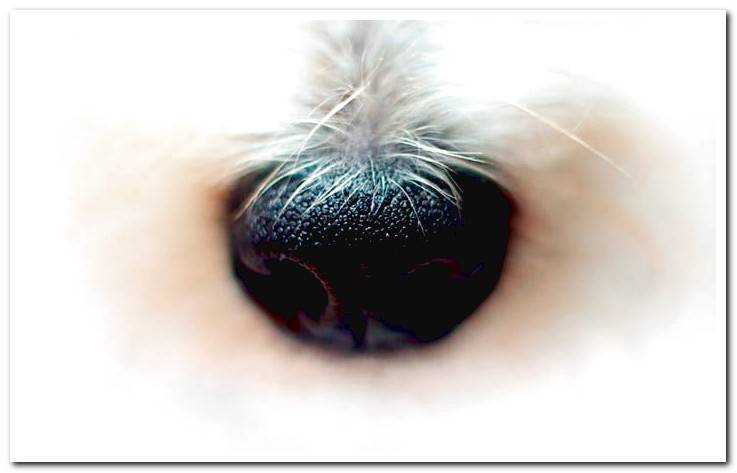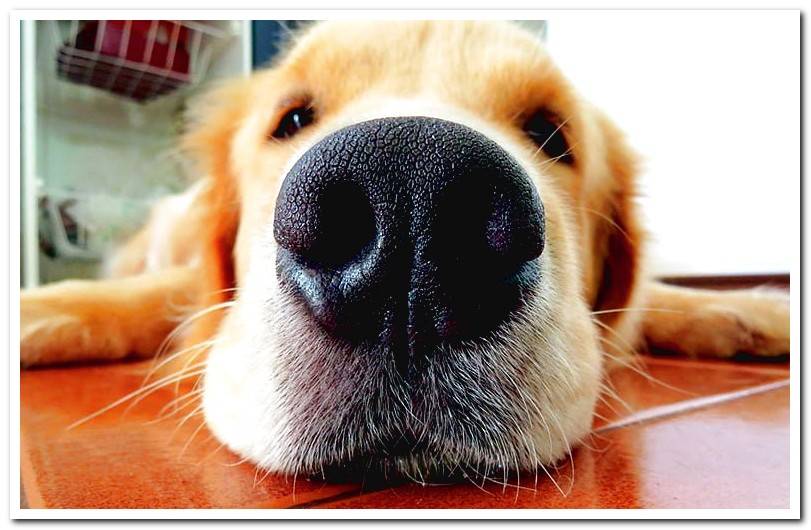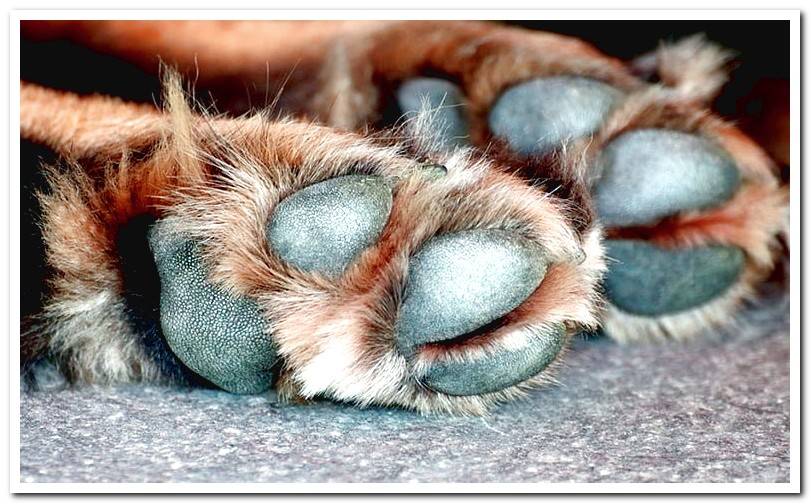
Canine hyperkeratosis is a skin disorder that mainly affects the nose (truffle) and foot pads of dogs. Making your skin thicker and end up cracking.
Although it may seem like a purely cosmetic problem, we must keep in mind that it can become a painful condition and trigger secondary infections if it is not treated properly. Let’s see in detail how it originates and what is its treatment.
Index of contents
- 1 What is canine hyperkeratosis?
- 2 What are the causes of canine hyperkeratosis?
- 3 What symptoms does canine hyperkeratosis produce?
- 4 How is canine hyperkeratosis diagnosed?
- 5 What is the treatment for hyperkeratosis?
- 6 Hyperkeratosis prognosis
What is canine hyperkeratosis?
Hyperkeratosis is a skin condition related to increased keratinized tissue production or retention, which mainly affects the nasal plane and / or pads of dogs. Thus we can classify it in nasal or plantar hyperkeratosis.
Keratin is a protein and is the main component of hair and nails in most animals. In hyperkeratosis, excess keratin is produced, causing thickening and hardening of the affected skin..
The truffle of dogs in normal conditions is smooth, flexible and shiny, however, in cases of nasal hyperkeratosis it becomes dry, increases in thickness and can crack. In cases of plantar hyperkeratosis, the periphery of the pads is more affected. It is a progressive disease, and it can be a source of discomfort for the dog.

What are the causes of canine hyperkeratosis?
The causes of hyperkeratosis are diverse, the most common being:
- Secondary hyperkeratosis: Canine hyperkeratosis can be secondary to a wide variety of diseases, that is, it can be a symptom of underlying infectious diseases (distemper, leishmaniasis), congenital (ichthyosis), autoimmune (pemphigus foliaceus, systemic lupus erythematosus) or food (dermatosis that responds to zinc ).
- Hereditary or genetic hyperkeratosis: As is the case of the familial hyperkeratosis of the foot pads in the Dogue Aleman and Bordeaux. In these cases, the condition may appear relatively early, between 4 and 9 months.
- Idiopathic hyperkeratosis: The most common clinical presentation of canine hyperkeratosis in dogs is spontaneous idiopathic, that is, the one that develops in healthy animals that do not have any underlying pathology. It usually appears especially in older animals.
What symptoms does canine hyperkeratosis produce?
As we have already seen, canine hyperkeratosis mainly affects the truffle and / or the foot pads of the dog. It is presented as an accumulation of keratin with a dry, cracked appearance and variable thickness..
The hyperkeratotic areas are thickened and hardened, and can become cracked, causing bleeding, which leads to the appearance of secondary infections by bacteria or fungi (Malassezia).
Nasal hyperkeratosis can affect the entire truffle or only part, and in plantar hyperkeratosis the area around the periphery of the pads is usually more affected.
Local inflammation and cracks are often painful for dogs, even causing lameness if it affects the foot pads. For this reason, we must go to the vet to establish the appropriate treatment and avoid that our pet is uncomfortable.

How is canine hyperkeratosis diagnosed?
Hyperkeratosis is easily identifiable by the signs that it produces at the level of the truffle and / or the pads of the dog, however, the veterinaryn must determine if it is secondary to any systemic pathology (distemper, leishmaniasis, foliaceous pemphigus …) or if it is treated of idiopathic nasal hyperkeratosis and is therefore not associated with an underlying disease.
This may require blood tests or biopsy of the affected tissue.
What is the treatment for hyperkeratosis?
If a specific underlying disease is diagnosed as being responsible for hyperkeratosis, the pathology should be treated accordingly.
In the case of idiopathic hyperkeratosis, although it is an aesthetic problem in principle, should be treated in cases where the animal feels discomfort, has bleeding or secondary infections.
The treatment aims to soften and remove excess keratinized material by application of keratolytic substances (preparations with salicylic acid, urea and sodium lactate) and hydrate and protect nasal tissue with the application of petroleum jelly or other ointments (Bio balm) that will allow the skin to regain flexibility.
In the event that the hyperkeratolytic tissue cracks are infected, systemic treatment with corticosteroids, antibiotics and / or antifungals will be necessary.
Treatment of nasal hyperkeratosis can be difficult due to the animal’s tendency to lick off medicinal products applied topically to the nose.
Hyperkeratosis prognosis
Idiopathic hyperkeratosis cases generally require lifelong treatment. Once the possible secondary infections have been controlled and the lesions (cracks) have healed, a maintenance treatment should be established, which will mainly consist of cleaning with saline solution and applying topical ointments (Bio balm) to facilitate the removal of excess keratin and maintain the hydrated and elastic skin thus avoiding the appearance of cracks and secondary infections.
Omega 3-6 fatty acid supplements can promote the improvement of this process and prevent recurrences.
Due to the nature of the lesions and the licking of the topical treatment, it can become a frustrating treatment disease, which will require a lot of patience and dedication from the owners.
